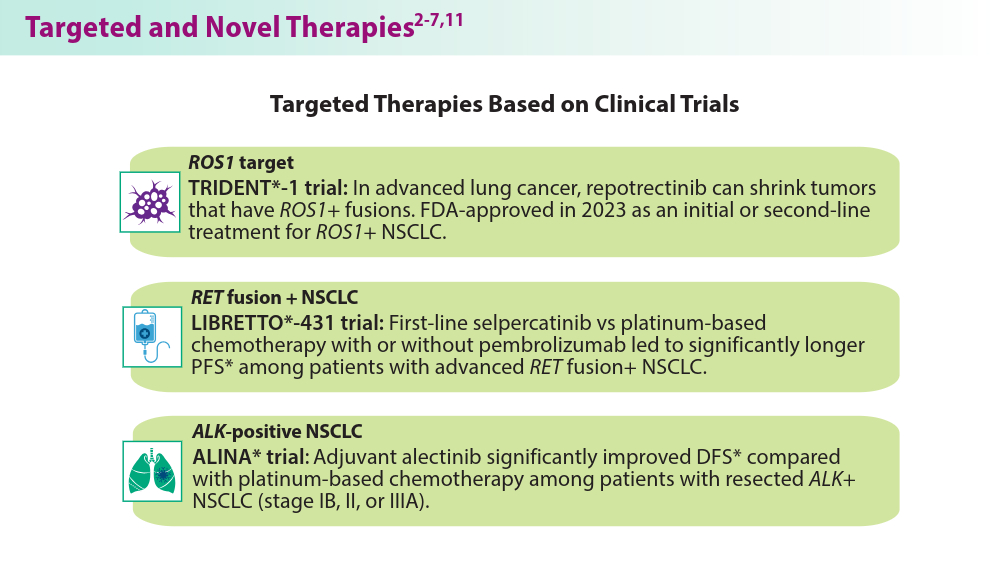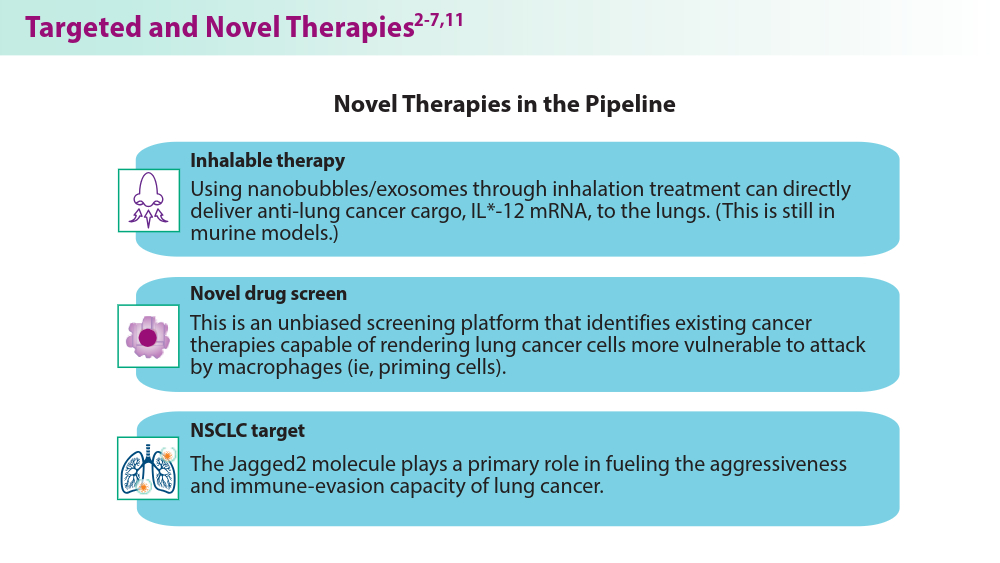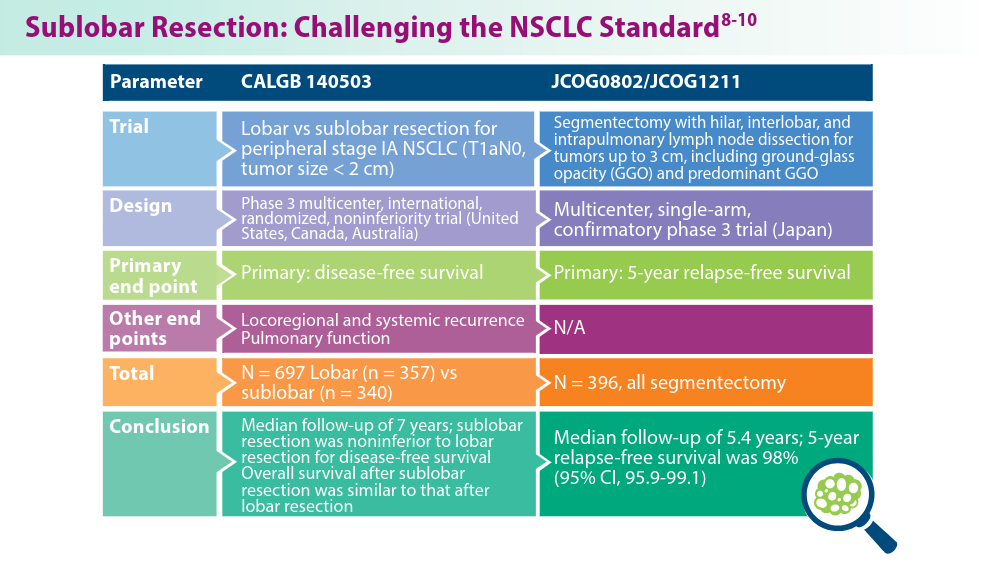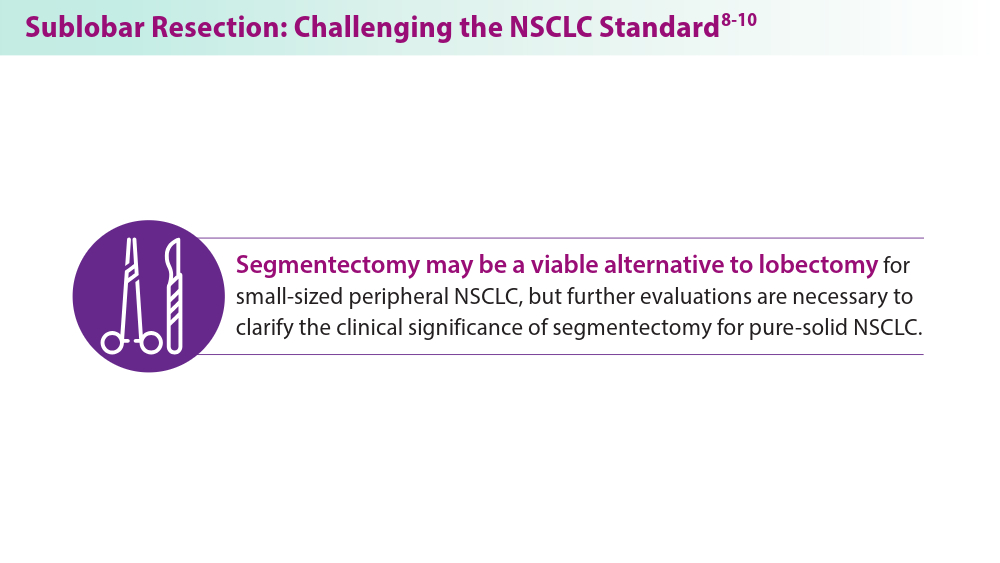Targeted Therapies and Surgical Resection for Lung Cancer: Evolving Treatment Options





Saadia A. Faiz, MD, FCCP
Professor, Department of Pulmonary Medicine
The University of Texas
Physician
MD Anderson Cancer Center
Houston, TX
Dr. Faiz serve(d) as director, officer, partner, employee, advisor, consultant, or trustee for: Medscape. Medscape and MDedge are both part of the Medscape Professional Network.





Lung cancer, the leading cause of cancer-related deaths in the United States, is expected to have 234,580 new cases and 125,070 deaths in 2024.1 Targeted therapies directed toward ROS1, ALK, and RET* have demonstrated clinically significant outcomes for patients with non-small cell lung cancer (NSCLC).2-5 Further emerging novel drug formulations, including macrophage immune checkpoint inhibitors, inhaled cytokines, and Notch ligands,show promise with targeted delivery and fewer adverse effects with in-vitro and murine models.6,7 Lobectomy is currently the gold standard for NSCLC treatment. However, sublobar resection (segmentectomy or wedge) are viable alternatives for early-stage NSCLCs, as shown in the CALGB 140503 and JCOG0802/ WJOG4607L112 trials.8-10 As lung cancer screening with computed tomography increases, detection of early-stage NSCLC, primarily adenocarcinoma, has also grown. Many of these lesions are peripheral and ground-glass opacity-dominant tumors.9 The CALGB 140503 and JCOG0802/JCOG1211 trials suggest sublobar resection is associated with an even lower risk than lobectomy, thus preserving lung function.8-10 The JCOG0802/JCOG1211 trials specifically demonstrate segmentectomy does not compromise therapeutic efficacy for tumors ≤ 3 cm.9,10 Targeted therapies are showing potential for treating NSCLC, and sublobar resection is proving to be a viable alternative to lobectomy for certain NSCLC cases. These developments mark significant strides in lung cancer treatments.




